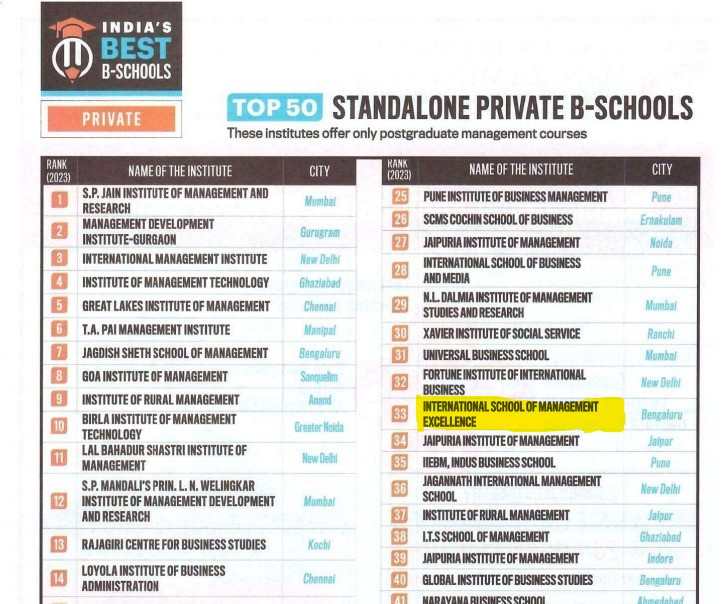19th April 2025
Introduction
“A shared blueprint for peace and prosperity for people and the planet, now and into the future” is the mission statement of the United Nations’ (UN) Sustainable Development Goals (SDGs). The SDGs, also known as Global Goals, were adopted to ensure peace and prosperity for all people by 2030 and to protect the earth. Once these goals are achieved, what will happen thereafter? “Then the people on the earth will live happily ever after” Possible? We are only five years away from knowing the outcome.
All 17 SDGs are intertwined. Activities in one area will impact others. Although all the goals cannot progress equally, indeed, one goal alone cannot reach its objective without others contributing their might. This is well recognized when countries commit to helping other underdeveloped countries. This implies that people should be cared for before sustainability, i.e., society comes before sustainability. Taking care of society will result in sustainability. Taking care of society is service. Hence, for the peace and prosperity of humanity, the need of the hour is Service. In other words, the key is Triple S, i.e. Service, Society and Sustainability.
Triple S
Management science defines service as “any act or performance one party can offer to another that is essentially intangible and does not result in the ownership of anything” (Kotler, et al., 2009, p. 338). However, scholars have different views about service. In the book The Wealth of Nations (1776), Adam Smith differentiated the outputs as “productive” and “unproductive” labour. He stated that productive labour produced goods that can be stored and exchanged for items of value at a later date and that unproductive labour created services that perished immediately on production and therefore didn’t contribute to wealth (Skinner, 2005). He maintained that, services no matter however “honourable, …useful, or… necessary” have to be paid by others. This gives an impression that services are inferior to products. Consequently there emerged Goods-Dominant Logic (GDL) based on the exchange of goods as a productive output.
However, the word “service” appeared in 279,673 articles out of 1,325,931 articles examined by ABI Inform in 1997 (Johns, 1999), about 21.1 percent. The word now denotes distinctly identifiable activities that meet the customer’s wants. They are essentially intangible and may either stand alone in their own right or be a part of a product. The service industry is described as that which “do things for you. They don’t make things” (Silvestro & Johnston, 1990). In India, the service sector contributes over 50 percent to the country’s GDP (India Brand Equity Foundation, 2023). No wonder there emerged a new paradigm called “Service-dominant logic”.
Vargo and Lusch (2004) introduced a “new dominant logic” called the “service-dominant (S-D) logic” of marketing. Accordingly, goods and service are not seen as competing forms. They both are offerings made by a firm to satisfy the customers’ needs. They are collectively called ‘Products.’ While goods are appliances, service is the application of specialised competencies. According to Gummesson (1995, p. 250), the traditional idea of goods and services is unsuitable and ineffective. He argues that customers buy goods for the service they render, which is of value to them. Gronroos (2000, 87-88) hypothesised that the marketing of physical goods and the marketing of services will converge. Marketing happens when an exchange takes place, when one party exchanges resources for the benefit of another party.
Marketing implies that the two exchanging possess something of value to the other party. One party, particularly the marketer – the one proposing the exchange- seeks to profit out of the exchange. The motive of marketing, thereby marketing of services is to earn a profit. It can be said that one performs a service to earn a profit. Several dictionaries define service similarly to the above concept. However, this interpretation of service is not the service in triple S.
In another context, (seems long forgotten) service is defined as a ‘selfless act that aims to protect, and help, underprivileged human beings and animals and those in need of support or distress.’ Service is done without expectations of reciprocation, monetary benefits, or awards. Viewed through a business lens, no exchange takes place. All religions consider this kind of service as one of the biggest religious duties. Some even consider this service not a religious obligation but an act of humanity. In Indian culture service to others is regarded as the highest religious duty. It is called Sewa. In fact, the triple S should read as Sewa, Society and Sustainability.
In my opinion, as long as there is a profit motive in service, it does not augur well for humanity and the SDG goals will remain a dream. There are many instances where service industries have gone wrong since profit was inbuilt in their services. Let us take a look at few examples,
Boeing—Boeing is a legendary company that started in 1916 and manufactured airplanes, rockets, and satellites (ColdFusion 2024). It stood for safety, innovation, and engineering. In 1969, it launched the iconic 747, the “Queen of Skies,” revolutionising air travel. The company’s unparalleled run took an exceptional beating when its focus turned from innovation and engineering (I may call it service) to profit.
In 1997, Boeing merged with McDonnell Douglas. Besides the logo, its culture was also changed by McDonnell’s profit-first approach. Boeing came out with the 737 Max after compromising on many fronts to compete with the Airbus A320 and A320 neo, to whom it had lost grounds. Then, disaster struck. Boeing 737 Max was involved in two similar crashes in less than five months, killing 346 people – Lion Air Flight 610 on October 29, 2018, and Ethiopian Airlines Flight 302 on March 10, 2019. The Boeing 737 MAX was grounded worldwide between March 2019 and December 2020 and longer in some places. Boeing agreed to plead guilty to the criminal fraud conspiracy charge and pay a criminal fine of $243.6 million in the case related to the two crashes (Anon 2024a). Once again, Boeing 737 Max 9 aircraft operated by U.S. airlines were temporarily grounded as several issues were seen with some of its planes (Anon 2024b).
The root cause of all the above Boeing woes can be attributed to its shift from a focus on engineering and safety to profit.
Similarly, Toyota’s investigation into testing and certification methods in crash testing found wrongdoing in seven different models. Toyota Chairman Akio Toyoda apologised for the massive cheating on certification tests.
Another example is Nestlé, a Swiss food giant whose products in lower-income countries contain up to 7.3 grams of added sugar per serving. In contrast, the same food sold in Europe often contained none, according to the findings of an investigation by Public Eye and the International Baby Food Action Network (IBFAN), based on data from the market analysis company Euromonitor.
The U.S. Centers for Disease Control and Prevention and The World Health Organization also advise parents and guardians not to add sugar to complement foods for children 2 years or younger.
The list goes on, and we see businesses under the cloak of service only do a disservice.
Conclusion
Businesses cannot run on charity and donations, and true services or sewa cannot be performed with profit as one of the motives, however minuscule it is. One has to find a middle path, tending towards sewa for peace and prosperity. If one does sewa in business, another greedy one will outwit him with a marketing strategy. Only a conscious society can prevent this and safeguard itself and the planet.
Suggested discussion questions:
- Is it possible to run a business without profit motive?
- How can a business, while making a profit, do sewa?
Works Cited
Gronroos, C., 2000. Service management and marketing: A customer relationship management approach. West Sussex, UK: Wiley.
Gummesson, E., 1995. Relationship marketing: Its role in the service economy. In: W. J. Glynn & J. G. Barnes, eds. Understanding services management . New York(1995). ): Wiley, pp. 244-268.
India Brand Equity Foundation, 2023. Service Sector Contribution to India’s GDP. [Online]
Available at: https://www.ibef.org/research/case-study/service-sector-contribution-to-india-s-gdp
[Accessed 0 April 2025].
Johns, N., 1999. What is this thing called service?. European Journal of Marketing, 33(9/10), pp. 958-973;https://doi.org/10.1108/03090569910285959.
Kotler, P., Keller, K. L., Koshy, A. & Jha, M., 2009. Mamreting Management. 13 ed. Noida, India: Pearson – Dorling Kindersley (India) Pvt. Ltd..
Silvestro, R. & Johnston, R., 1990. The determinants of service quality – enhancing and hygiene factors. New York, USA, St John’s University, p. 206.
Skinner, R. H. C. a. A. S. ed., 2005. ADAM SMITH, AN INQUIRY INTO THE NATURE AND CAUSES OF THE WEALTH OF NATIONS, VOL. 1 (GLASGOW EDITION OF WORKS, VOL. 2) (1776). s.l.:s.n.
Vargo, S. L. & Lusch, R. F., 2004. Evolving to a new dominant logic for marketing. Journal of Marketing, January, 68(1), pp. 1-17 ; https://doi.org/10.1509/jmkg.68.1.1.24036.



